Review for Sphere / 2010: The Year We Made Contact / Contact
Introduction
The global economy is seriously bent, if not busted altogether. In the gradual process of upgrading my DVDs to Blu-ray, 2010: The Year We Make Contact showed up as a likely candidate, as it’s a film that I love, and it also has a lousy transfer on DVD. After all, the letterbox transfer is hardly conducive to enjoyable viewing in this HD age. So to a price comparison website to find the best deal, only the best deal in the UK isn’t that great. It turns out that the 2010 Blu-ray got something of a limited release here, and copies aren’t cheap to come by. But it’s a Warners disc, the same disc released around the world, coded Region Free, so importing becomes the next obvious option. The US disc is a little more reasonable, but the cheapest I find it for is half of the price of that in the US, in a 3-disc collection, along with two other sci-fi movies that I didn’t want in the first place, Sphere and Contact... from Australia. All in all, it costs me a third of the price of getting it locally than it does in getting it from half-way around the world, and I get two other movies as well. This can’t be the way that economies are supposed to work!
Anyway, I’m working my way through the set, least wanted film first. For your Australian Dollars, you get an Amaray style Blu-ray case, with one disc at the back, and 2 either side of a central panel. Incidentally, part of my review for 2010: The Year We Make Contact is repeated from my DVD review of that film, and that text is in italics.
Sphere: Introduction
When a new administration came into the White House, and wanted to establish that it was ‘doing’ things, commissioning a report for First Contact protocols with aliens must have seemed like an easy pay packet for psychologist Norman Goodman. He wasn’t expecting actual aliens to show up. Now he and his ‘hand-picked team’ have been flown to the middle of the Pacific, where the US Navy is dealing with the discovery of a crashed UFO at the bottom of the ocean. It’s been there for hundreds of years, but it still shows signs of life. Norman, biochemist Beth Halperin, mathematician Harry Adams, and astrophysicist Ted Fielding are expected to go down and make friends with that life. For one thing, the hand-picked team aren’t all that thrilled about being hand-picked, for another thing, that UFO is stranger than they could ever have expected, and for yet another, it’s nowhere near as strange as the object in its cargo hold.
Sphere: Picture
Sphere gets a 2.35:1 widescreen transfer at 1080p resolution, using the VC-1 codec. It doesn’t exactly zing as an exemplar of the medium, but the image is clear and sharp enough, with a decent enough layer of film grain to remind you of the source medium. The clarity is good, detail levels are certainly higher than that you would find on a DVD, and the image is stable and free of print damage. I do feel that detail levels could have been better still, and there was an overall softness to the image that gave the film a certain flatness.
Sphere: Sound
You have the choice between Dolby True HD 5.1 Surround English and Dolby Digital 2.0 Stereo French, along with subtitles in English HOH, French and Spanish. It’s a robust and effective surround track, establishing effective underwater ambience, and bringing across the action with impact. I did have to whack the volume up past halfway to experience this though, but otherwise the dialogue is clear and audible throughout.
Sphere: Extras
This is one those discs that goes straight to the movie, and pressing Top Menu only loads up a list of extras. You’ll have to change audio and subtitles from within the film I’m afraid.
On the disc you get a commentary by Dustin Hoffman and Samuel L. Jackson. Well I say commentary, but it’s actually a scene-specific commentary from Jackson, with an interview with Hoffman edited in. There’s not a lot of Hoffman, and there’s plenty of Jackson, and quite frankly the commentary is more interesting that way.
Shaping the Sphere: Art of the Special Effects Supervisor has Jeff Okun talking about his role on the film for 15 minutes.
You get the film’s theatrical trailer and you get a trio of TV spots. All of the video extras on this film are presented in 480i resolution.
Sphere: Conclusion
The words ‘based on a novel by Michael Crichton’ used to be something to look forward to in a film’s opening credits. The Andromeda Strain, Westworld, Jurassic Park were all memorable movies. By the time Sphere came around, those were words to run from. Sphere is a dire sci-fi movie, a pale imitation of dozens of better first contact thrillers. It’s a mix of sci-fi, horror and action, and certainly the idea behind it, the concept is interesting enough. The execution of that idea is severely lacking, and for me it has the daftest conclusion to a film that I have seen in many a year.
What lets the film down the most is the writing. We have a cast of professionals, a hand-picked team of scientists, and military personnel in charge of the mission, but they are all written as bickering teenagers, saying and doing the daftest things all in service of the ill-conceived plot. The dialogue is poor at best, and as things get more fraught in the story, the situation tenser, the dialogue just gets worse. There’s also an odd choice to split the film up into chapters, each with its own text heading to introduce the next bit. This has the effect of killing the pace again and again, and makes the film feel longer than it actually is.
There is a good idea in this film, and up to the point where they actually discover the Sphere, it manages to hold the interest. It’s all downhill thereafter, and I spent most of the time watching this film, wishing I was watching The Abyss instead. The only redeeming feature about this disc is the audio commentary. Listening to Samuel L. Jackson talk about this film is more fun than watching it.
4/10
Contact: Introduction
Eleanor Arroway is a scientist with a singular obsession, that of making contact with life not of this world. To this end, she has devoted her energies to SETI; the Search for Extra-Terrestrial Intelligence, which some in her field think is a waste of her considerable talent. It’s her tragic childhood that has spurred her on this journey, and when the government shut down the programme in Arecibo, she manages to secure private funding and the use of the radio telescopes in New Mexico through sheer force of personality.
It’s still a government facility though and access is limited. Their time is about to run out when the long-hoped for moment occurs, a signal is heard and from relatively close by. Delta Vega is a star that’s just 26 light years away, and long considered too young to have a planetary system, but there it is, a simple progression of prime numbers, and hidden within, a television image broadcast from Earth sixty years previously, and hidden within that a complex mathematical message, a blueprint, or indeed an invitation. Only now, the US Government that were so intent on shutting Dr Arroway’s programme down, are keen to accept.
Contact: Picture
Contact gets a 2.35:1 widescreen transfer at the 1080p ratio. It’s a nice transfer, clear and detailed throughout with a decent level of film grain. Just like Sphere it could be a little stronger though, more vibrant and a tad sharper. Dark details aren’t quite there, and I noticed a bit of strobing on textiles in one scene. What really do show up on this transfer are the Gump-level effects shots. Digitally created mass crowd scenes, famous people inserted into the film from pre-recorded source, particularly Bill Clinton’s speech, all stick out like a sore thumb 15 years down the line.
Contact: Sound
You can load up on the audio options here, with Dolby TrueHD 5.1 English, Dolby Digital 5.1 Surround French, German, Italian, and Spanish, and Dolby Digital 2.0 Stereo Portuguese. You have subtitles in all these languages, with HOH options in a couple, as well as subtitles in Dutch, Swedish, Danish, Finnish, and Norwegian. Once again I found the volume a little low on the English track, easily rectified and I found a robust and agreeable surround track, not really called on in the first half of the film, but once the science fiction bit of the film kicked in, things did get lot more intense.
Contact: Extras
I didn’t really have the motivation to sit through the extra features, but I did make sure that they existed. Just like the Sphere disc, the film autoplays on insertion of the disc, while Top Menu loads the extras menu, you can only access the audio and subtitle options during playback via the pop-up menu.
You have three commentaries with this film, one with Jodie Foster (Eleanor Arroway), one with director Robert Zemeckis and producer Steve Starkey, and one with Senior Visual Effects Supervisor Ken Ralston and Visual Effects Supervisor Stephen Rosenbaum.
You have four making of featurettes that look at the Opening Shot, the NASA Machine Destruction, The Harrier Landing, and the High Speed Compositing Reel. There’s around 45 minutes of footage here, presented almost like a Powerpoint presentation, images and voiceover from the Visual Effects team.
There are little snippets of CGI in various stages of completion that look at the Machine Flyby, Hadden’s Plane, and NASA Control Room, 2 minutes of footage with voiceover.
You get a 5.1 Music Only track to go with the film. It’s incorrectly flagged as DD 2.0 on my player but the 640kbps bitrate and the fact that all six of my speakers were working suggests that it is DD 5.1 as advertised.
Finally there are two trailers for the film.
All of the extras except the extra audio tracks are presented in 480i resolution.
Contact: Conclusion
I remember catching the last half of Contact on television and wondering what all the fuss was about. I’d heard comparisons to 2001, learned that it was based on a Carl Sagan novel, heard that hard sci-fi was making its way to cinema screens once more. But I wasn’t impressed with that half movie that I saw. Well, now I’ve seen the whole thing, and I’m even more disappointed. Contact is a damp squib of a sci-fi film, one which has what should be a gripping premise, and an engaging story, but in execution it keeps falling flat.
Contact is a film that falls victim to Hollywood-isation, the characters are so single-note and clichéd that it’s impossible to take them seriously. The earnest, righteous and flawless scientist Ellie, her manipulative and self aggrandising superior Drumlin, the paranoid and militaristic NSA advisor Kitz, the hippy scientists in SETI, the James Bond villain-esque Hadden, they are so paper thin that it’s impossible for me to take them seriously.
Then there is the question that lies at the heart of the film, the dichotomy between faith and science, which this film portrays by having the earnest and righteous scientists pitted against the ‘moronic religious nuts’, albeit tempered by the presence of love interest and moderate religious nut Palmer Joss (you know a man has issues when his name is backwards). The question of what is more important to humanity, faith or science, is answered with a cop out of ‘they’re both the same thing’ which I guess is supposed to be ironic.
Contact is supposed to be hard sci-fi, inviting comparisons to films like 2001, Solaris, or Silent Running, but to me it’s just another popcorn movie wearing hard sci-fi clothing, inviting comparisons to films like Stargate and Independence Day, and unfavourable comparisons at that. In the end, the Forrest Gump technology gimmicks serve to distract and Zemeckis fashions a fairy tale ending which ladles on the schmaltz in such a way that it discredits the journey to that point. If you want to see this story done right, I’d recommend a Star Trek: The Next Generation episode called The Nth Degree, it’s a whole lot more interesting, and mercifully shorter in length.
6/10
2010: Introduction
In 1999, a mysterious black monolith was discovered on the moon, which when examined broadcast a powerful signal to Jupiter. The already scheduled Discovery mission was re-tasked and a scientific team was despatched. When the vessel arrived in Jupiter orbit in 2001, the computer HAL malfunctioned, killing the science crew in suspended animation, and co-pilot Frank Poole, before being deactivated by pilot Dave Bowman. Bowman discovered a significantly larger monolith in Jupiter orbit, but vanished when he went to investigate it further. His last transmission, “My God, it’s full of stars!” Nine years on, the then director of exploration Heywood Floyd is now a teacher at a university, where his current Russian counterpart approaches him. The Russians are launching a mission on the Alexei Leonov to investigate just what happened with the Discovery mission. The Americans have planned their own Discovery II mission, but the Russians will get their first. With tensions high, and Cold War brinkmanship the order of the day, co-operation seems unlikely, but something odd is happening to Discovery’s orbit between Jupiter and Io, and suddenly time is of the essence. Three Americans are allowed to travel with the Russians as observers, the designer of Discovery Walter Curnow, HAL’s creator Dr Chandra, and Floyd himself. But the spirit of peaceful exploration in space may not last long as the Earth inches ever closer to its final war. What no one realises is that “Something is going to happen, something wonderful!”
2010: Picture
2010: The Year We Make Contact gets a 2.35:1 widescreen transfer at 1080p resolution using the VC-1 codec. Just like the other films in this collection, the transfer is good, offering sufficient detail, absence of visible compression artefacts and richer colours to warrant the HD appellation. I was seeing detail that I had never seen before, either on television or on that letterboxed DVD, including the tear running down Doctor Chandra’s cheek when he said goodbye to HAL. Film grain hasn’t been scrubbed out by DNR, and the filmic experience is very much appreciated. The one thing that might take a hit because of the HD quality is special effects. I was spotting matt lines around spaceship composite shots that I had never seen before in the film. But, once more the transfer doesn’t take full advantage of the HD medium, with the image on occasions a little soft and generally feeling flat throughout. I also felt that reds were pushed a little strongly.
2010: Sound
Hold onto your hats as we’ll be here a while with these. You get a Dolby TrueHD 5.1 English surround track, but the disc defaults to the Dolby Digital 5.1 English track when you insert it into the player and you’ll have to remember to switch. Also on this disc are DD 5.1 tracks in Italian, French, German, Catalan, DD 2.0 Stereo Spanish, and DD 1.0 Portuguese (Brazilian). You get subtitles in all of these languages, and HOH subtitles in a few also. In addition there are subtitles in Danish, Finnish, Norwegian, Portuguese, and Swedish.
I was happy enough with the Dolby TrueHD track, although it doesn’t really overwork the surround speakers all that much. The dialogue is clear, that inimitable theme music has the same impact, and the film’s effects come across well.
2010: Extras
Once more, the film autoplays on insertion, there is no main menu screen, and audio and subtitles have to be selected via the pop-up menu during playback, while Top Menu takes you to a static screen where you can access the film’s extras.
Those extras comprise the 2010: The Odyssey Continues featurette, lasting 9 minutes and presented in 480i, which is a contemporary look behind the scenes from 1984.
You also get the film’s theatrical trailer, 2½ minutes in 480i presented in letterbox format.
2010: Conclusion
I’ve always found 2001 to be cold, impersonal, clinical, emphasising machines over mankind, and revelling in its visuals ahead of delivering a gripping narrative. I felt the same about the novel (minus the visuals of course), and I actually prefer a story with a more humanist angle to it, some meaty characters to get my teeth into. 2010 has this in excess, yet also maintains a tight grip on the sci-fi concepts that drive it, never sacrificing depth of intelligence for quick thrills or cheap entertainment. And once again, I feel the same about the novel. 2010: The Year We Make Contact is a great sci-fi movie, intelligent, smart and thought provoking, and at the same time it’s a taut, tense Cold War thriller, yet it approaches both these aspects from a character perspective, making it a very personal and appealing story.
Roy Scheider was great in all he did, and his Heywood Floyd is light years away from the 2001 incarnation, personable, witty and charismatic. He has a personal stake in finding out what happened to the Discovery mission, as he was responsible for it in the first place. He has to come to terms with leaving his family for months, outweighed by his need for absolution, and he also has to balance the demands of the US government, with the need to cooperate and function with his country’s enemies. Then there is Chandra, who created HAL, and who sees the computer’s failure as his own. He is invested in finding out what went wrong, but in terms of personality, he’s more like his computers than human. The fish out of water engineer Walter Curnow supplies the human aspect. He is there because the Discovery was his baby, but as patently becomes clear, he builds spaceships more than he flies in them. He also strikes up a great friendship with the Russian EVA specialist Max. It’s interesting to see the different degrees to which the crew meshes, both as the mission continues, and as the tensions on Earth increase.
That’s what makes this film stand out more than its prequel, and probably also that, which dates it the most, the Cold War posturing. It’s a sign of the times of course, back in 1984 the world was poised on its own brink, and a lot of the media of the time reflects that. No doubt it’s a sign of the budget of course, but it’s also very effective in that the focus remains on the ship for much of the time, and that the standoff between the USA and the USSR happens off screen. We don’t need to see blockades, and missiles, presidential addresses and protests to understand the gravity of the situation, the uneasiness that develops between the Americans and the Russians aboard the Alexei Leonov is more than enough to get that across. Besides, I’m a child of the Cold War, and I still lap Cold War thrillers like this up, with nuclear brinkmanship and the impending end of the world always more interesting, because we came so close in real life.
9/10
In Summary
What a waste! To get the film I wanted at the best possible price, I had to have it shipped halfway around the world, and get two films that I didn’t want thrown in. Let’s hear it for globalisation! 2010 was everything that I hoped it would be, and thanks to its HD presentation, it actually delivered more in terms of detail and the cinematic experience. Sphere on the other hand didn’t even manage to live up to my low expectations, a juvenile horror movie masquerading as sci-fi. Contact on the other hand had high aims, but seen through sugar coated, Hollywood schmaltz, it resulted in something pretentious, uneven and unsatisfying.
As for the discs, these are the DVDs writ HD. Certainly from my experience of the 2010 DVD, and I suspect the other films as well, the distributor went back to the same source they mastered the DVDs from and struck HD prints as well. The resultant image certainly has more in the way of detail and colour depth, but never looks as impressive as dedicated Blu-ray re-masters of archive films. In terms of extra features, they have just ported over those DVD extras with no thought of upgrading those to HD, and the resultant discs look like a slap-dash attempt to turn a quick profit. Still I have 2010 in a watchable format at last!
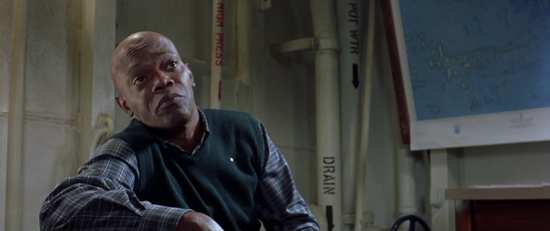
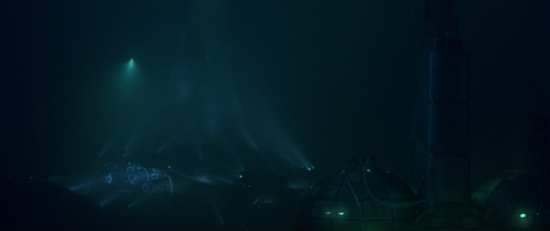
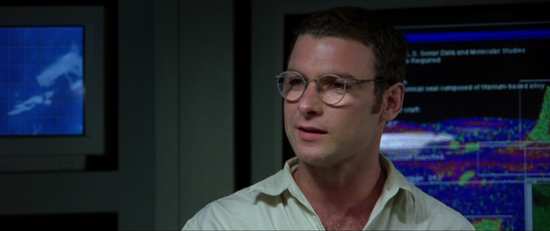

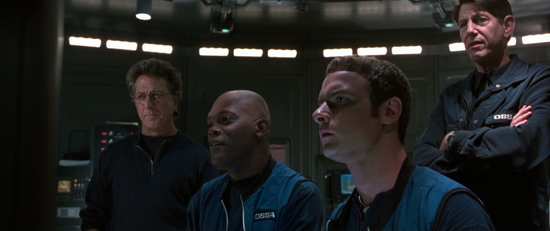
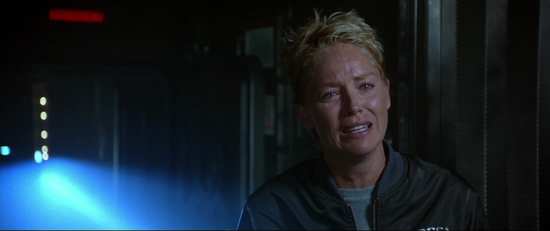
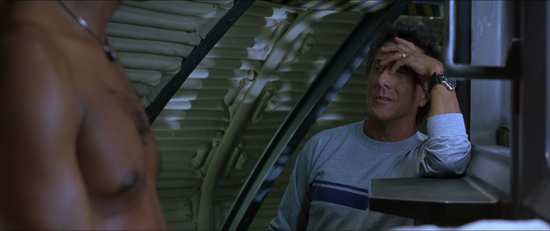
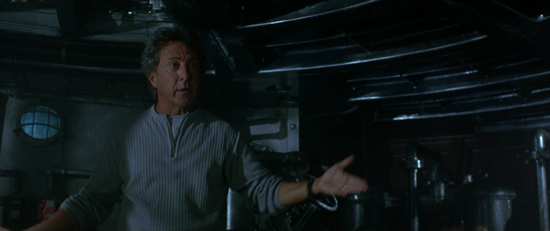
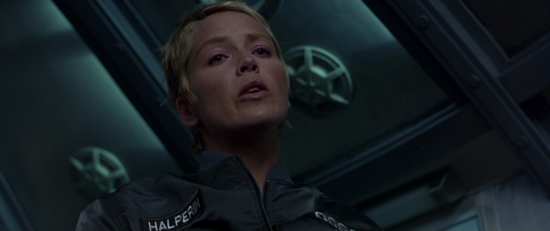

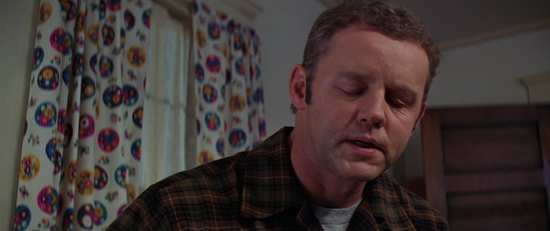
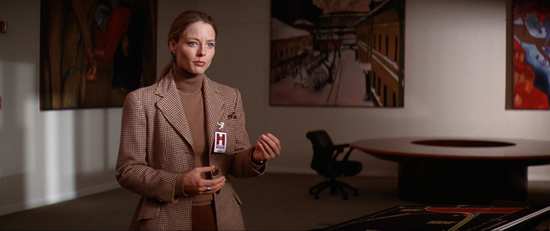

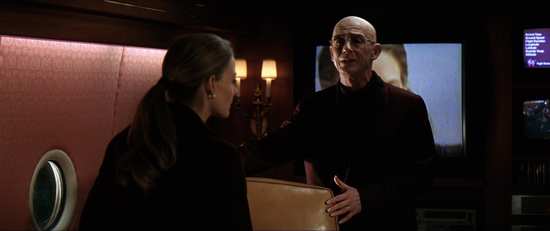
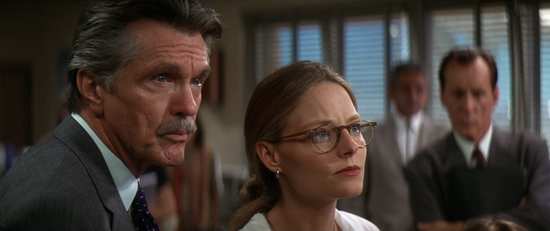
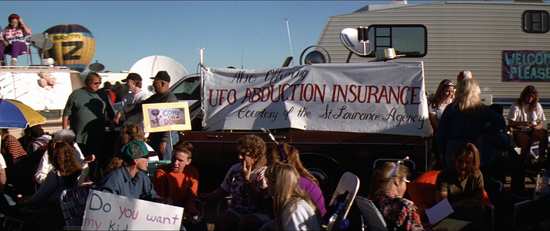
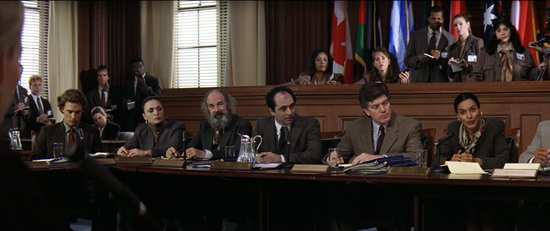
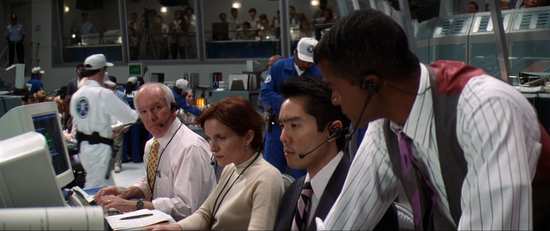
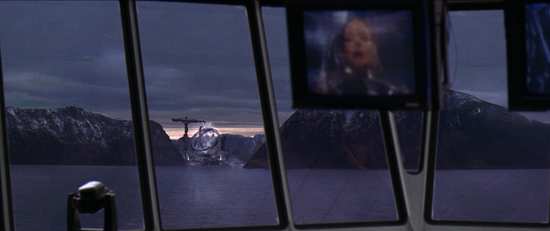
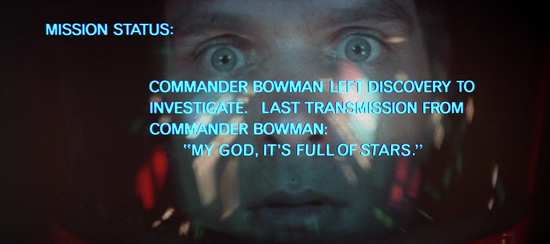

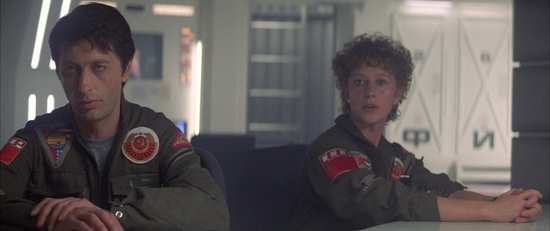
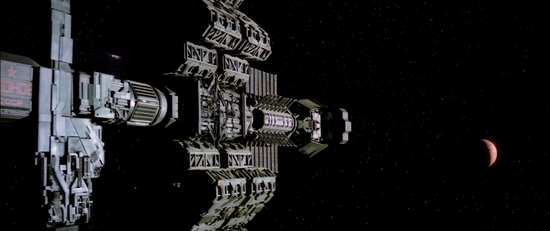
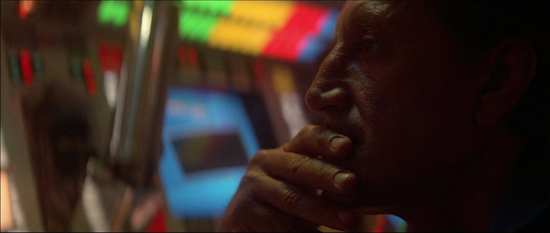
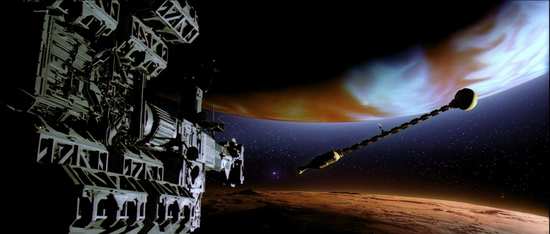
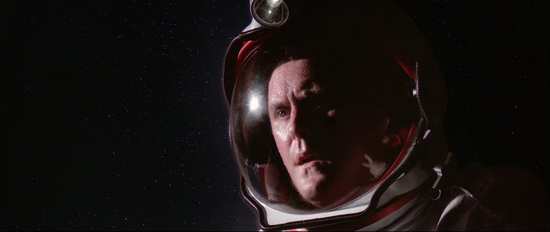
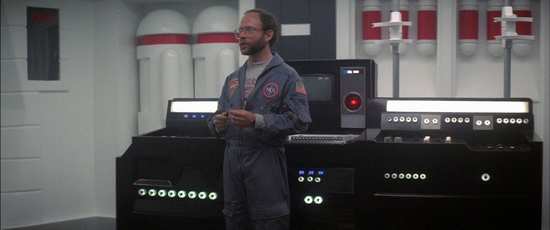
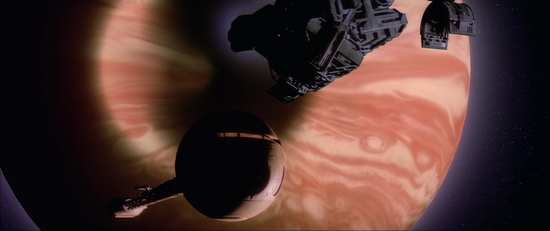
Your Opinions and Comments
http://www.find-dvd.co.uk/blu-ray/2010-The-Year-We-Make-Contact/1092540.htm
Play have it for £45
http://www.play.com/stores/AphroheadBooks/listing/628798236
Import from the US for around a tenner plus P&P through Amazon
http://www.amazon.co.uk/2010-Year-Contact-Blu-ray-Import/dp/B001993Y1S/ref=sr_1_3?ie=UTF8&qid=1385059019&sr=8-3&keywords=2010+contact&tag=myrev09-21
They've got a triple pack with Contact and Red Planet for around £20
I got this Aussie triple for £7 + P&P from DevotedDVD but they're OOS.
They have now got the single discer though for £5ish + P&P. I would have gone for this if I'd known how bad Sphere was.
http://www.devoteddvd.com.au/2010-the-year-we-make-contact-blu-ray-blr.html?filter_name=2010%20contact